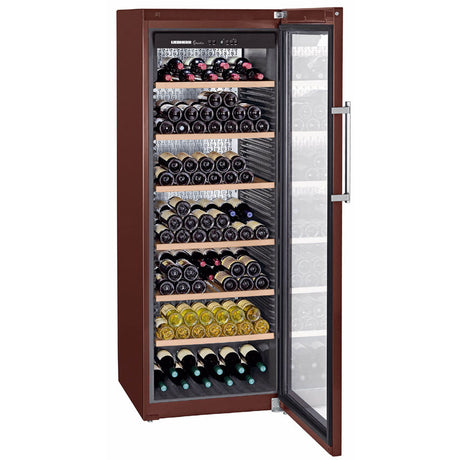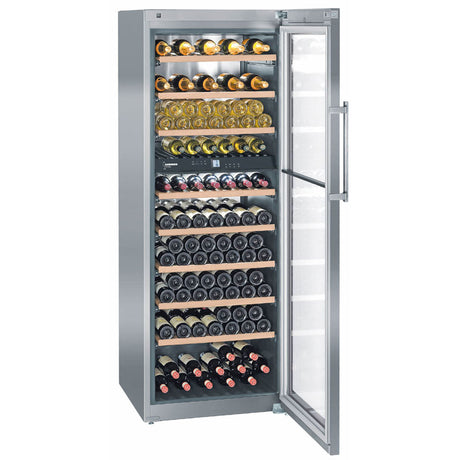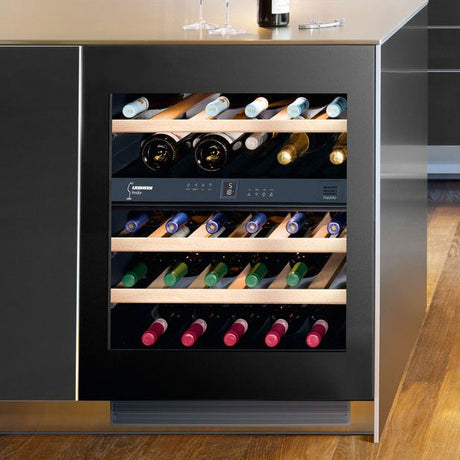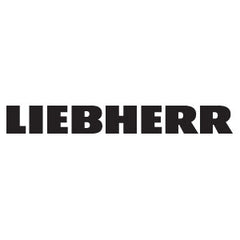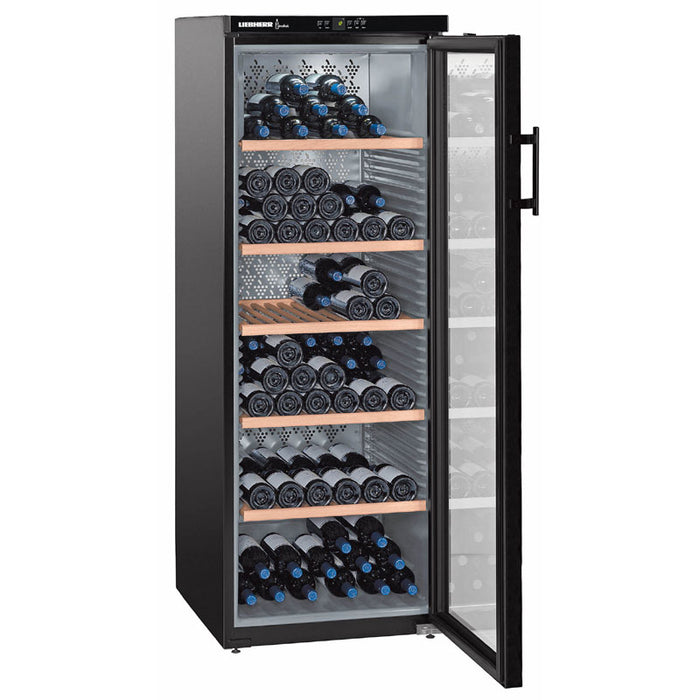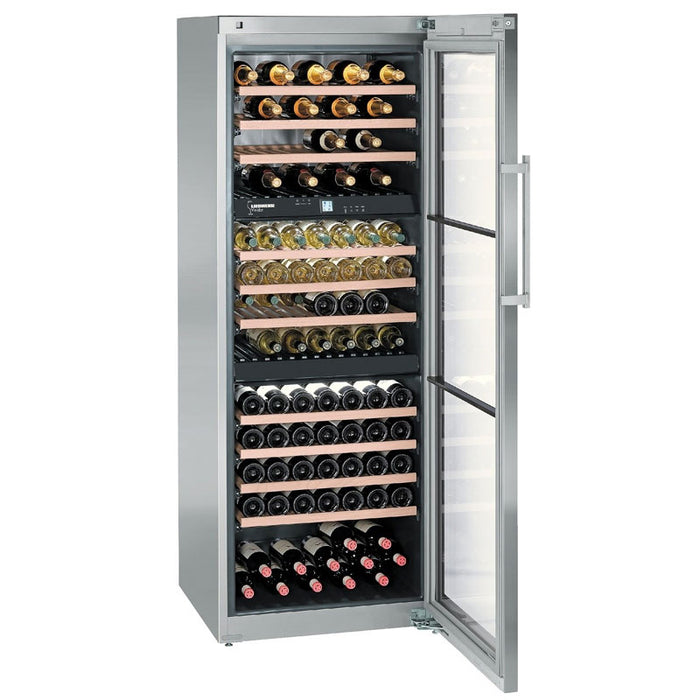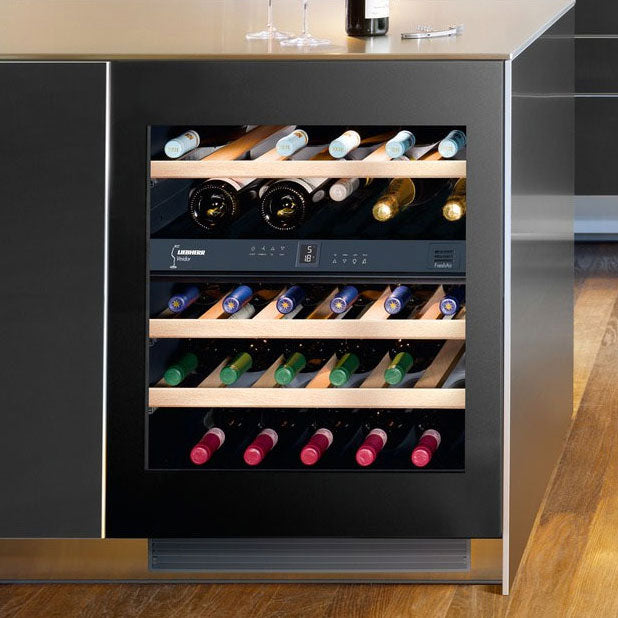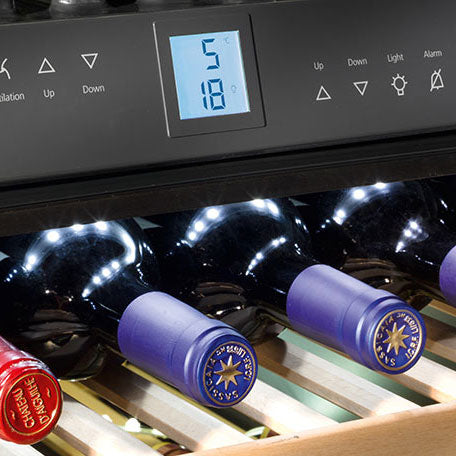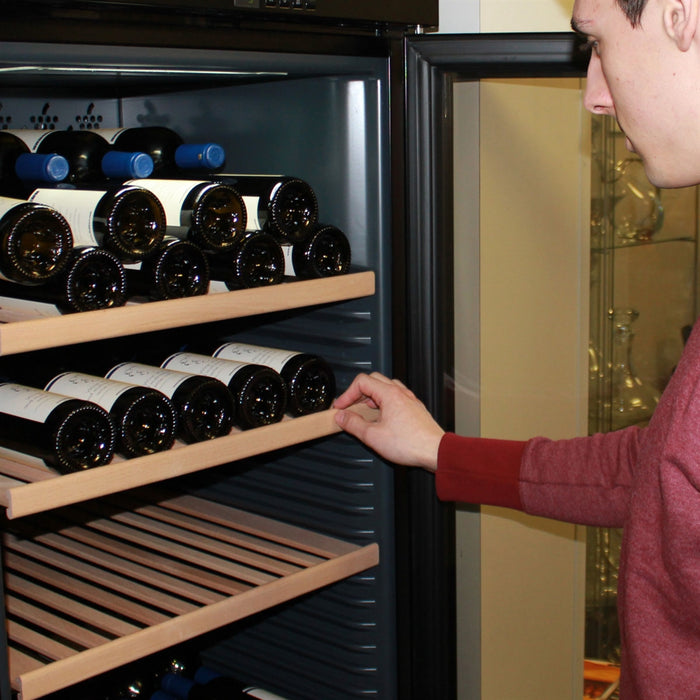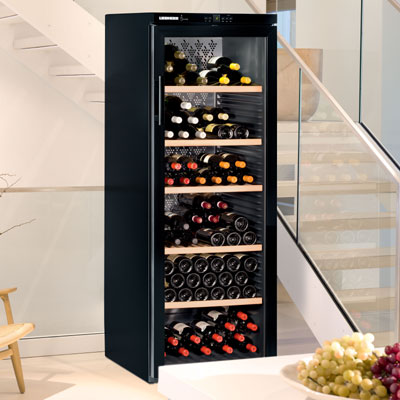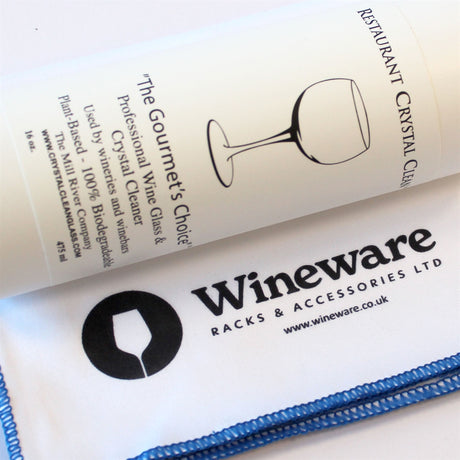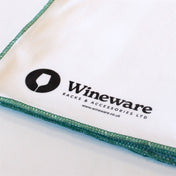- Ideal storage temperatures: Red Wine: 12˚C < 19˚C, White Wine: 8˚C < 12˚C, Champagne: 5˚C < 8˚C.
- Purpose-built wine rooms and wine refrigerators provide the best conditions for storing wine.
- Wine is best stored in a dark room, vibration-free and with humidity under 70%.
You should store wine at the correct temperature to ensure a wine's flavour and the balance remains. You don't want a wine to age prematurely or be ruined by its storage conditions, so it is essential to know the optimal wine storage temperatures and conditions for your bottles of wine.
Extreme fluctuations in temperature most often damage wines. You can prevent this with Wineware's 'Wine Storage Temperature Guide', which provides valuable information on how best to store your bottles of wine.
Are you looking to store wine in your home, restaurant or bar? Our handy wine storage guides can help!
Wine storage options
There are three main ways to store your bottles of wine safely and securely:
Wine cellar - This is the ideal way to store your wine bottles; it is ideally temperature- and humidity-controlled. Wine cellars are a cost-effective solution for storing wine and are bespoke from one home to another. You can organise your wine bottles in various ways, such as by the wine region, France, with Bordeaux, Bourgogne, Alsace, Loire, Rhone, and other French regions.Another way to organise wine is by vintage; if you collect a particular wine, store it in numeric order (vertical collection). Wine bottle neck tags are handy for writing down the most crucial information about your bottle of wine, especially the name and date on the front (with other information listed on the back).
A makeshift closet wine cellar - This is ideal for wine lovers and enthusiasts. It is a quick and straightforward way to store your wine bottles in any size space (small or large) in your house. You can search for online guidance and videos on creating your own makeshift closet wine cellar.If you have a spare walk-in wardrobe, cupboard or room, you can transform it into a unique closet wine cellar! However, this option does not have temperature control. A makeshift closet wine cellar is perfect for an everyday drinker but not as effective as long-term storage.
A wine cabinet or refrigerator - These are reliable ways to maintain the temperature of your wine bottles and are worthwhile investments for wine professionals and wine merchants. Wine cabinets/refrigerators are available in various sizes and cater to all sizes of collections.
Ideal wine storage conditions
- You should not store wine with anything that has a strong, potent smell, as this can taint the wine and cork. Good ventilation in your wine storage facility is preferable as this stops musty odours from entering the wine.
- Wine is best kept in the dark and free from vibration. Do not move bottles of wine too much or vigorously, as this can spoil the wine. Store wine away from light, as direct sunlight or fluorescent fixtures can ruin the wine. If you cannot keep a bottle shaded from the light, cover it entirely and wrap it with a cloth, as this will offer more protection. Alternatively, store the wine bottle inside a cardboard box.
- Humidity is vital to the condition of the wine. If the humidity is too high, this offers the perfect conditions for mould to grow and the wine bottle labels to loosen and deteriorate. Therefore, it is advised that humidity does not exceed 70%. You can monitor the humidity with a thermohygrometer; this determines the need to humidify or dehumidify the air if required. You can install a dehumidifier to control the moisture conditions of the room.
Optimal wine storing temperatures
Wineware has provided this information as a general guide to help you store your wine; remember, this is not the case for all wines and should only be used as a rough guide.
The perfect temperature depends on various factors, including how much fruit, alcohol, and tannin the wine contains. As a general rule of thumb, wine should be stored around 11-14˚c (52-57°F). Wine storage temperatures should never go over 24˚c as otherwise, wines begin to oxidise, which negatively affects the wine.
A wine storage temperature should always be kept as constant as possible, as fluctuations can cause severe damage to the wine. A bottle of wine needs a constant temperature all year round to mature correctly.
Wineware has provided the tables below to help you know the optimum storage temperature for your wine (click here to download PDF).
Ideal storage temperature for wine
Full-bodied reds
| Wine | Temperature (˚F) | Temperature (˚C) |
|---|---|---|
| Cabernet Sauvignon, Red Burgundy, Barbaresco, Barbera, Barolo, Brunello, Recioto, Malbec | 63˚F | 17˚C |
| Shiraz, Zinfandel, Grand Cru Bordeaux, Ribera del Duero, Carmenere | 64˚F | 18˚C |
| Vintage Port, Banyuls, Madeira | 66˚F | 19˚C |
Light-to-medium-bodied reds
| Wine | Temperature (˚F) | Temperature (˚C) |
| Beaujolais | 54˚F | 12˚C |
| Young Spanish and Portuguese Wines | 55˚F | 13˚C |
| Chinon, Sherry, Tawny Port | 57˚F | 14˚C |
| Light Zinfandels, Chianti | 59˚F | 15˚C |
| Pinot Noir, Merlot, Rioja, Bordeaux (Young) | 61˚F | 16˚C |
Dry whites
| Wine | Temperature (˚F) | Temperature (˚C) |
| Alsace Riesling, Italian Whites, Pinot Blanc, Pinot Gris, Pouilly Fume, Pouilly Fuissé, Gruner Veltliner | 46˚F | 8˚C |
| Chenin Blanc, Bordeaux Blanc, Sauvignon Blanc | 48˚F | 9˚C |
| Chardonnay | 50˚F | 10˚C |
| Condrieu, White Burgundy | 52˚F | 11˚C |
| Full-bodied Chardonnay and Graves | 54˚F | 12˚C |
Sparkling wines and sweet wines
| Wine | Temperature (˚F) | Temperature (˚C) |
| Asti spumante, Cava | 41˚F | 5˚C |
| Non-vintage Champagne and Sparkling Wine | 43˚F | 6˚C |
| Sweet Vouvray, Tavel, White Zinfandel, Barsac, Icewine, Tokaji, Sauternes, Auslese, Beerenauslese, Trockenbeerenauslese, Sake | 45˚F | 7˚C |
| Vintage Champagne, Muscats, Riesling (New World) and Sparkling Wine | 46˚F | 8˚C |
How long can wine be stored?
Remembering to store wine for the appropriate amount of time is essential. "All wines improve over time." This is not true for all wines; generally, inexpensive wines will not improve.
As a general rule of thumb, red wines can be stored for 2-10 years, depending on the sugar, acid and tannin content. Many fine red wines can be aged for up to 100 years! White wines, on the other hand, are generally only stored for 2-3 years. However, some chardonnays can be stored/aged for over 20 years.
Helpful wine-storing tips/advice
- Storing your wine horizontally keeps the cork moist and minimises the chance of the cork drying and shrinking, allowing air to enter your bottle of wine.
- You can protect wine bottle labels by using plastic protectors or cellar sleeves. These are useful in damp or moist storage settings.
- When you serve your wine, adjust the temperature, allowing the wine to rise or fall to the appropriate temperature. Please see Wineware's 'Perfect Drinking Temperature for Wine Guide' if you require further advice regarding optimum serving temperature.
- Do not leave a bottle of wine in the freezer, as this will be detrimental to the wine and could also cause damage if the wine were to freeze and expand, thus possibly causing the bottle to shatter.
- Most importantly, collect and store bottles of wine you like! Collecting bottles of wine can be an enjoyable activity, and with the proper storage solution, you can make the most of your wine bottle collection.
If you require further information or advice on storing your wine bottles (or other-size bottles), please do not hesitate to contact us or view our handy wine storage guides. Wineware also has a 'Perfect Drinking Temperature for Wine Guide' to help you get the most out of your wine, serving it at the optimum temperature.


